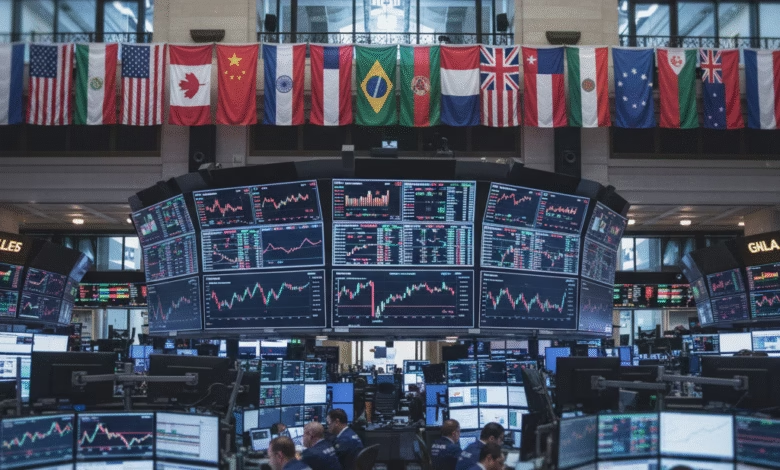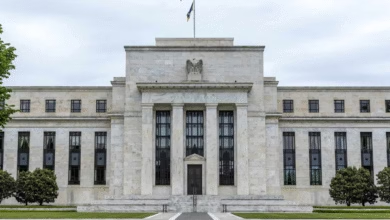What was the first stock exchange created?
Find out which was the first stock exchange created and which moved the financial market

In our hyper-connected world, we take the stock market for granted. With a few taps on a screen, we can buy a piece of the world’s largest companies. The market feels abstract, a digital construct of flashing numbers and real-time charts. But this complex system wasn’t born in Silicon Valley or on Wall Street. Its roots trace back four centuries to a bustling, canal-lined city at the heart of a global empire.
To find the origin of the stock market, we must travel back to the dawn of the 17th century, to a time of wooden ships, spice-laden trade routes, and unprecedented financial innovation. It was here, in Amsterdam, that a revolutionary idea took hold: a company could be owned not by a single family or a handful of wealthy partners, but by the public.
This is the story of the Amsterdam Stock Exchange, the world’s first-ever stock exchange. It’s a tale of groundbreaking ideas, immense risk, and the creation of a financial system that would lay the groundwork for modern capitalism and change the world forever.
The Birth of a Revolution: The Dutch East India Company (VOC)

Before you can have a stock market, you need something to trade. The catalyst for the world’s first publicly traded company was a powerful and ambitious enterprise: the Verenigde Oostindische Compagnie (VOC), better known as the Dutch East India Company.
Established in 1602, the VOC was a mega-corporation unlike any the world had ever seen. The Dutch government granted it a 21-year monopoly on all Dutch trade in Asia. This wasn’t just a shipping company; it was a proto-globalist power. The VOC had the authority to wage war, negotiate treaties, imprison and execute convicts, and establish colonies. Its goal was to dominate the incredibly lucrative spice trade, wresting control from the Portuguese and Spanish empires.
However, these long-haul voyages to the “East Indies” (modern-day Indonesia) were astronomically expensive and fraught with peril. A single voyage required building and outfitting massive ships, hiring hundreds of sailors, and stocking supplies for a round trip that could take years. The risks were immense: ships could be lost to storms, piracy, or disease.
No single merchant, no matter how wealthy, could shoulder this level of risk alone. The solution was as brilliant as it was revolutionary: the VOC would raise the necessary capital by selling shares of ownership to the general public.
For the first time in history, anyone—from wealthy merchants and government officials to humble artisans and household maids—could invest their savings and own a piece of the company. In doing so, they would share in the immense potential profits from the spice trade, but their risk was limited only to the amount of their initial investment. This was the birth of the limited liability company and the world’s first Initial Public Offering (IPO).
The Need for a Marketplace: The Amsterdam Stock Exchange
The VOC’s public offering was a massive success, raising over 6.4 million guilders from thousands of investors. But this created a new challenge. What if an investor, having bought a share, needed their money back before a ship returned from its multi-year voyage? What if someone who missed the IPO now wanted to buy in?
The answer was to create a secondary market where these new financial instruments—these “shares”—could be bought and sold freely among investors.
While informal commodity trading had existed for centuries in various forms, the Amsterdam Stock Exchange (Amsterdamse Beurs), founded in 1602 and given a dedicated building by 1611, was the first institution created to deal specifically and continuously in securities.
Located in a prominent courtyard building designed by Hendrik de Keyser, just a stone’s throw from the city’s main Dam Square, the exchange quickly became the epicenter of global finance. Every day, during business hours, investors, speculators, and brokers would gather in the open-air courtyard to trade.
This wasn’t just a place for VOC shares. The exchange also facilitated trading in other innovative securities, including shares in the newly formed Dutch West India Company and a wide variety of government and corporate bonds. For the first time, a centralized, regulated, and open marketplace existed for the sole purpose of trading financial assets.
A Day at the World’s First Stock Exchange: How Trading Worked

Walking into the Amsterdam Stock Exchange in the 1630s would have been a chaotic and exhilarating experience. There were no screens, no ticker tapes, and certainly no algorithms. The market was powered by human interaction, shouted orders, and handwritten contracts.
The process of trading was surprisingly sophisticated and laid the foundation for many practices we still see today:
- Brokers and Dealers: Most transactions were handled by professional brokers who acted as intermediaries. They would take orders from clients and then find a counterparty on the floor of the exchange to execute the trade for a commission.
- The “Hoek” (Corner): Trading for specific securities often happened in designated areas or “corners” of the courtyard, similar to the specialist posts that would later define the New York Stock Exchange.
- Price Discovery: The price of a VOC share was determined by supply and demand, negotiated in real-time through open outcry. If good news arrived about a successful voyage, buyers would outnumber sellers, and brokers would shout out increasingly higher bids, driving the price up. Bad news would have the opposite effect.
- Credit and Clearing: Trades were not settled instantly. They were recorded in brokers’ books, and payments were typically settled on a future date through the Bank of Amsterdam, one of the world’s earliest central banks. This created a reliable system for clearing large transactions.
Financial Innovations: Futures, Options, and the Birth of Speculation
The Amsterdam exchange was far more than just a place for simple buy-and-sell transactions. It was a laboratory for financial innovation, where traders developed complex instruments that are still central to modern finance.
- Futures Contracts: Traders didn’t just trade actual shares; they traded promises. A futures contract was an agreement to buy or sell a share at a predetermined price on a future date. This allowed investors to speculate on the future direction of the VOC’s stock price without having to put up the full capital immediately.
- Options Contracts: An even more complex instrument, an option, gave a buyer the right—but not the obligation—to buy or sell a share at a specific price within a certain timeframe. This was a powerful tool for both hedging risk and making highly leveraged bets.
- Short Selling: Speculators in Amsterdam were among the first to engage in short selling. If a trader believed the price of VOC shares was going to fall, they could borrow shares from another investor and sell them on the open market. Their hope was to buy the shares back later at a lower price, return them to the lender, and pocket the difference.
These innovations also led to the world’s first documented market bubbles and crashes. The infamous “Tulip Mania” of the 1630s, while primarily a futures market for tulip bulbs, saw many of the same speculative behaviors and financial instruments that were being honed on the stock exchange just a few steps away.
The Legacy of Amsterdam: From Canals to Wall Street
The Amsterdam Stock Exchange remained the most important financial center in the world for over a century, throughout the Dutch Golden Age. Its practices and innovations were studied and eventually copied by other rising economic powers.
The London Stock Exchange, which formally began in the coffee houses of 18th-century London, adopted many of the principles first established in Amsterdam. As the British Empire grew, London surpassed Amsterdam as the world’s financial capital.
Later, a group of merchants in a fledgling nation across the Atlantic would meet under a buttonwood tree in New York City to create their own system for trading government bonds and bank stocks. This agreement, signed in 1792, marked the founding of what would become the New York Stock Exchange (NYSE).

The line from the bustling courtyard in 17th-century Amsterdam to the digital networks of today’s global markets is direct. The fundamental concepts born there—publicly traded shares, limited liability, a centralized marketplace, and complex financial instruments—are the very bedrock of modern capitalism. Every time we check our 401(k) or buy an ETF, we are participating in a system that owes its existence to the pioneering vision of Dutch merchants and financiers four hundred years ago.





